All products featured are independently chosen by us. However, SoundGuys may receive a commission on orders placed through its retail links. See our ethics statement.
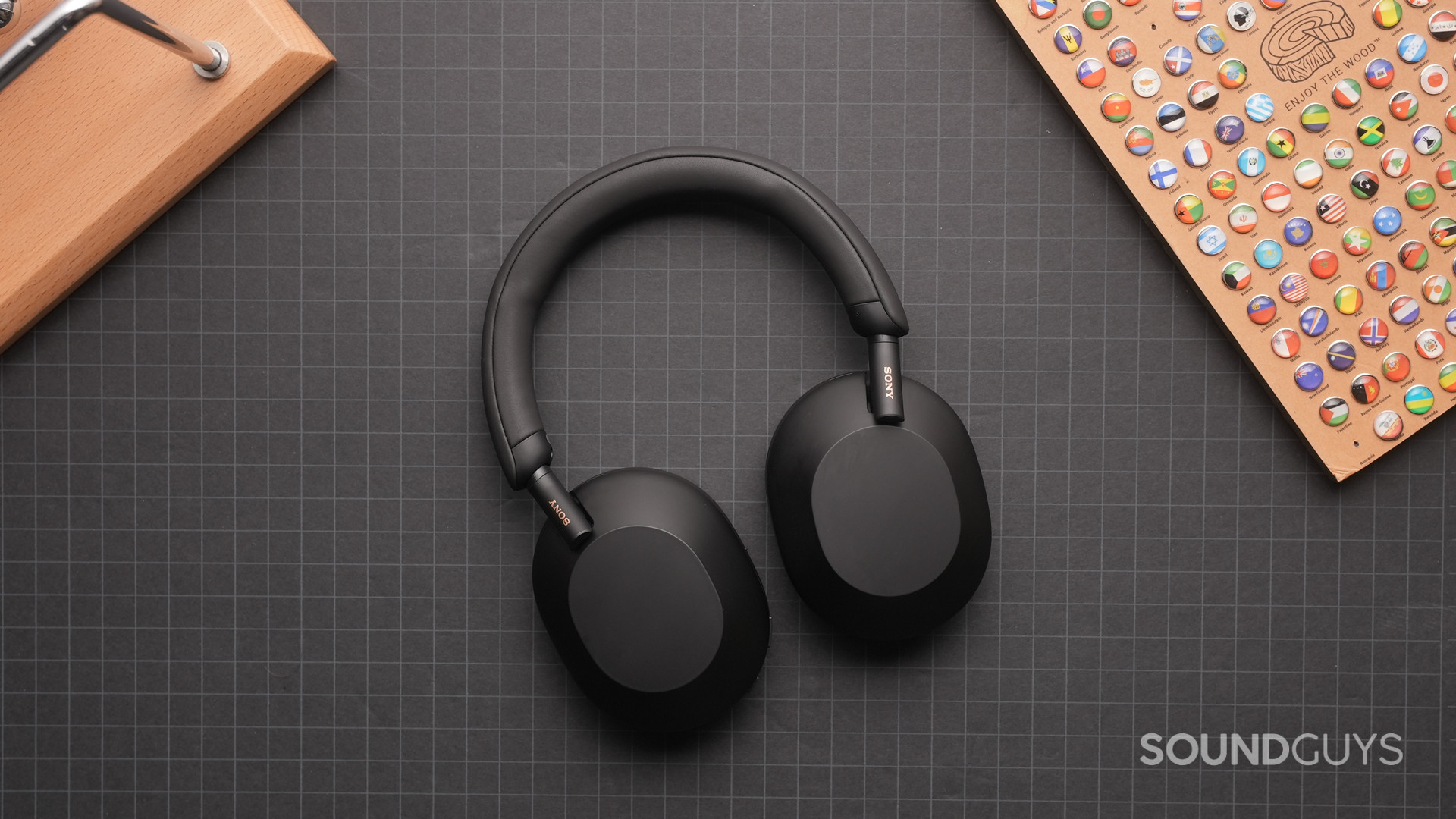
Sony WH-1000XM5
May 20, 2022
$399 USD
250g
WH-1000XM5
In the world of headphones, only a few companies’ new releases are actually worth paying attention to, and chief among those is Sony. Today we’re looking at the most recent update to the company’s flagship active noise canceling (ANC) headphones: the Sony WH-1000XM5. With a complete redesign, this is one of the best ANC headphones on the market — even at an eye-watering $400 USD. We spent a week getting to know the Sony WH-1000XM5 in rainy Vancouver, and we’re happy to share our notes with you.
Editor’s note: this Sony WH-1000XM5 review was updated on February 15, 2023, to add testing data to the review.
The Sony WH-1000XM5 is for anyone who finds themselves listening to music in varied conditions during the day, such as commuters, office workers, city-dwellers, and students. This product is especially good for those who spend a lot of time on calls, and those wanting higher-bitrate Bluetooth audio.
What is the Sony WH-1000XM5 like to use?
The WH-1000XM5 comes with lot of bells and whistles, and Sony still gets most of the fundamentals right. There are a few foibles, but the WH-1000XM5 is an ambitious set of headphones. For example, these cans take aim at a few features that have proven popular on other headsets, like Find My Device support via Android and Fast Pair.
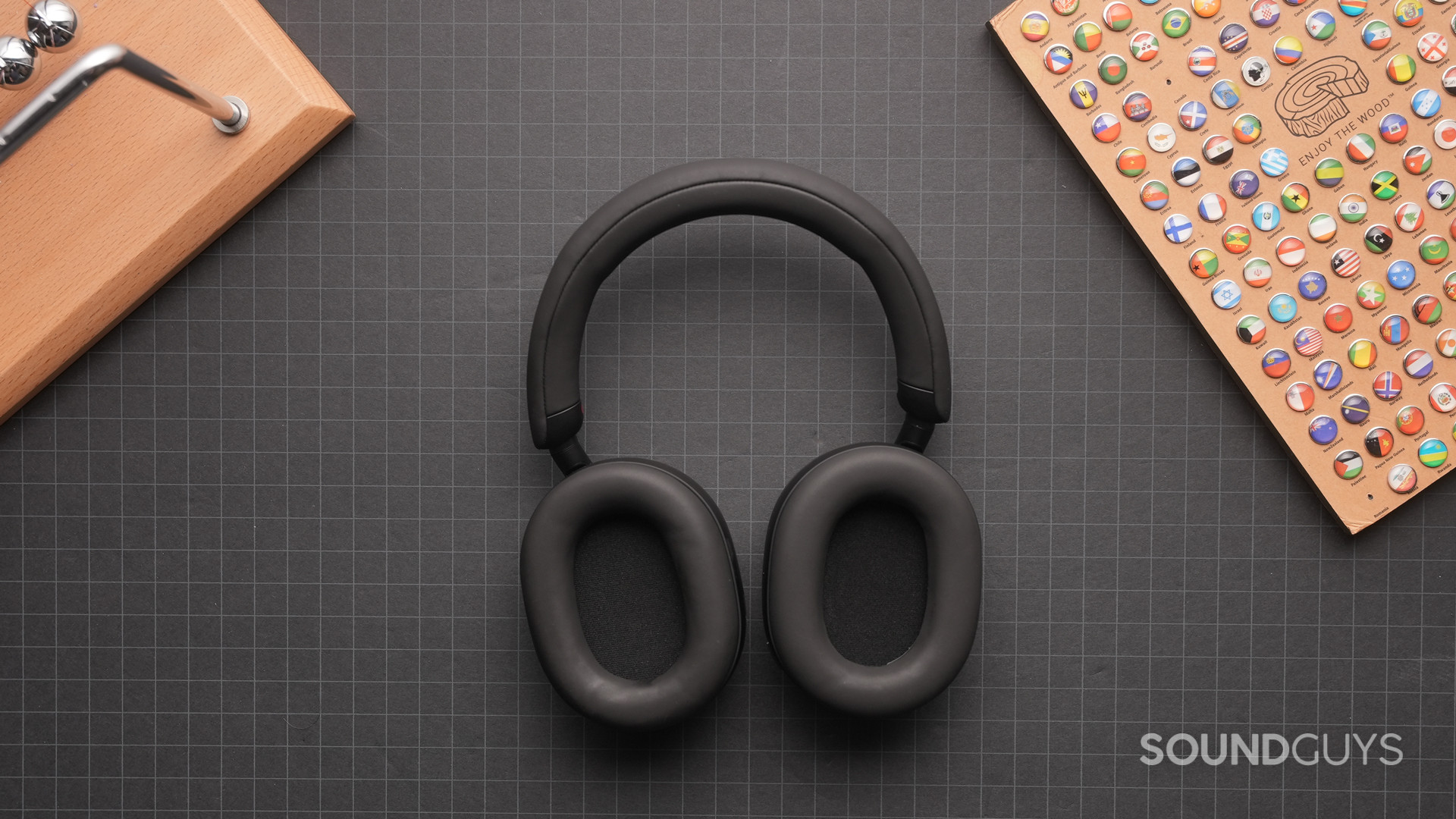
Clad in a soft coating and vegan leatherette, the contact area with your head provides ample friction but is soft enough to not be a bother. Where the pads on the previous WH-1000X headsets have been a little odd for those with larger ears, the padding of the Sony WH-1000XM5 is deep and wide enough to accommodate larger ears, and consequently: it’s comfortable.
Though 250g is not exactly featherweight compared to other ANC headphones the WH-1000XM5 is light enough to spare your noggin from extreme pressure in conjunction with the padding on the headband. The band itself has a friction rod design like the Grado Labs SR60x, instead of the notched track of the older Sony wireless headphones. While it’s not exactly a huge deal, it means there’s no setting you can just remember to fit: you just adjust on the fly.
After you’ve been using your headphones for a while, you may start noticing they handle a lot of things you don’t think about. The ear sensor is quite good at pausing music once you’ve removed the headphones from your head. Creature comforts like the option to enable ambient noise passthrough by cupping your hand over the right ear cup also make a return. It’s nice being able to keep the cans on while someone dumps something off on your desk, rather than taking them off and putting them back on a hundred times as they stop and start a disjointed conversation.
For those looking for gym buddies or those who live in rainy climes: these may not be the headphones for you.
If you’re looking for gym buddies or living in rainy climates, these may not be the headphones for you. Included in the literature of the headphones is a rather amusing graphic telling you not to sweat on these headphones, or take them out in the rain. I get the feeling that means these are probably a little more vulnerable to moisture than older Sony headphones, but without a definitive IP rating it’s tough to be sure.
How do you control the Sony WH-1000XM5?
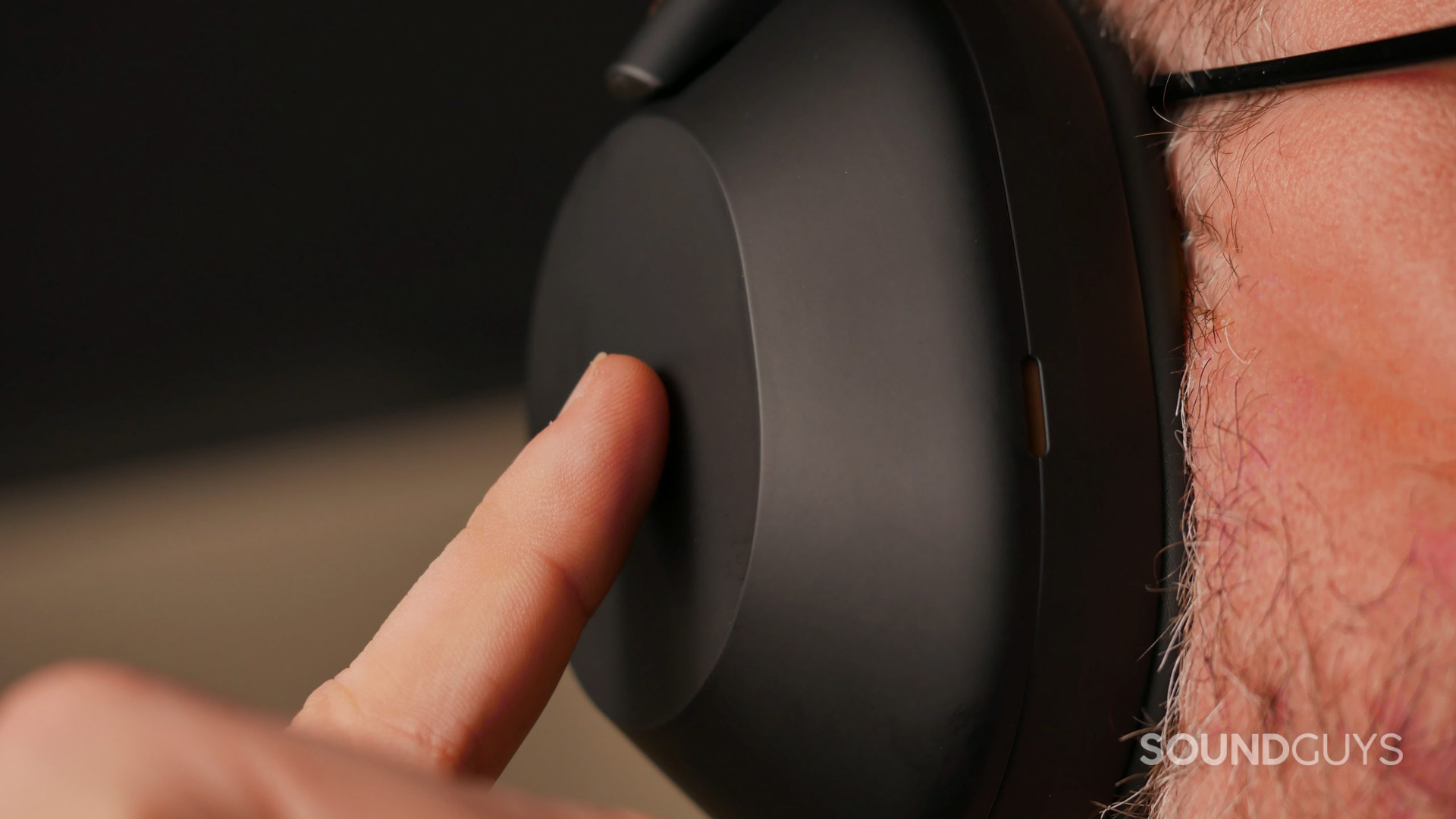
The main controls for the Sony WH-1000XM5 are very much like they were on the last three iterations of the series, using a capacitive touch panel on the right ear cup. All the old gestures make their return, as outlined below:
| INPUT (touchpad) | ACTION |
|---|---|
Swipe up | Volume up |
Swipe down | Volume down |
Swipe forward | Track forward |
Swipe back | Track back |
Hold (center) | Voice assistant |
Double tap center | Pause / resume |
Cup hand | Ambient sound passthrough |
On the WH-1000XM5’s left ear cup there are two buttons: a power button and an ANC mode button. Holding down the power button will turn the headphones on, and after three seconds will start pairing mode. From there, you can pair the usual way with your phone, or follow the pairing process for your computer.
Pressing the NC/AMB button will toggle the ANC mode. You can select either ANC, ANC off, or Ambient sound modes — the latter of which allows you to hear everything going on around you by piping in outside noise recorded by the microphone array.
How do you connect the Sony WH-1000XM5?
Like many other Bluetooth headphones, you can connect the WH-1000XM5 to your source device via wireless connection or TRS cable. If you are listening with a wired connection, you can turn the headphones on to enable ANC, or you can leave them off to forgo that feature (although they will sound quite a bit different in passive mode).
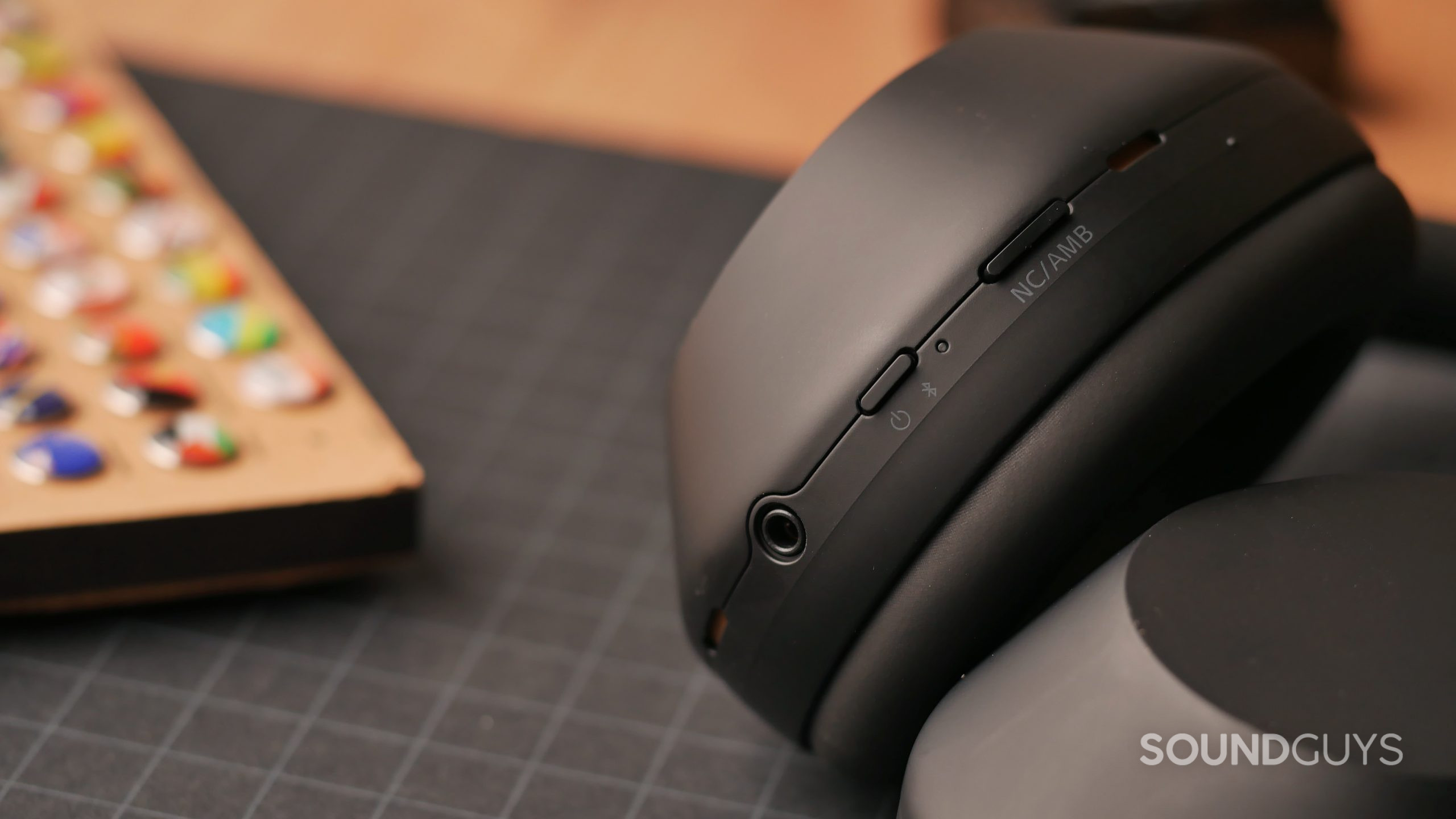
On the bottom of the right ear is a USB-C port, which allows you to charge the headphones. Annoyingly, you still cannot use this connection for wired digital music playback.
No. The listed sensitivity of 100dB/mW and impedance of 16Ω when the headphones are turned off means that no source should have any trouble providing the requisite power needed to work well. If you have the headphones on, those numbers change to 102dB/mW and 48Ω respectively, and you’ll be running through the internal amplifiers anyway.
According to Sony.com, the Sony WH-1000XM5 can connect to your Bluetooth-enabled devices via the LDAC, AAC, and SBC Bluetooth codecs. Sony did not return aptX support here — for that, you’ll need to pick up the older Sony WH-1000XM3 or any one of the best aptX headphones.
Should you get the Sony Headphones Connect app?
If you want to get the most out of your headphones, you should definitely get the Sony Headphones Connect App (iOS/Android) for your phone. I say that because not only is it required for features like ANC optimization, 360 Reality Audio, and a custom equalizer that saves the settings directly to the headset, but it’s also the main vehicle for Sony to get you updates to your headphones.
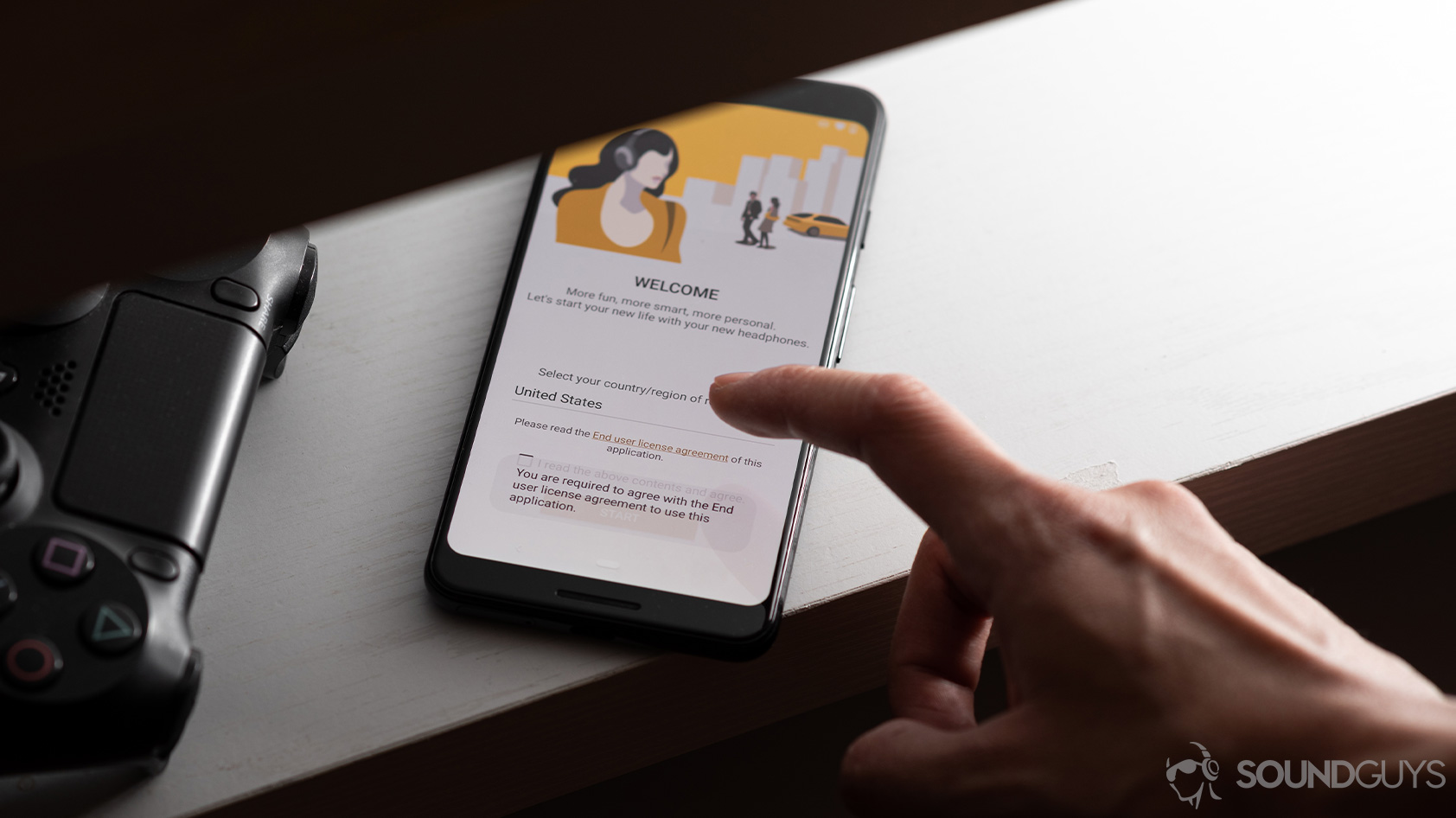
While there are a lot of goodies in the Sony Headphones Connect app, there are also a few pitfalls. Namely, it asks for a lot of personal information that it may or may not do other things with. Unfortunately, features like Google’s Fast Pair absolutely require a level of data sharing that can feel creepy. Sharing location data for headphones? It may seem a little intrusive, but how else are you going to use a find my headphones feature? It’s a bit tricky. Similarly, asking for photos of your ears can be a little off-putting, but that data is put to good use in adjusting the signal to your headphones to implement 360 Reality Audio.
Additionally, after the latest update, the app is needed to make the most of the spatial audio head tracking feature. However, you’ll need to be using an Android device with version 13 or newer.
How good is the battery life of the Sony WH-1000XM5?
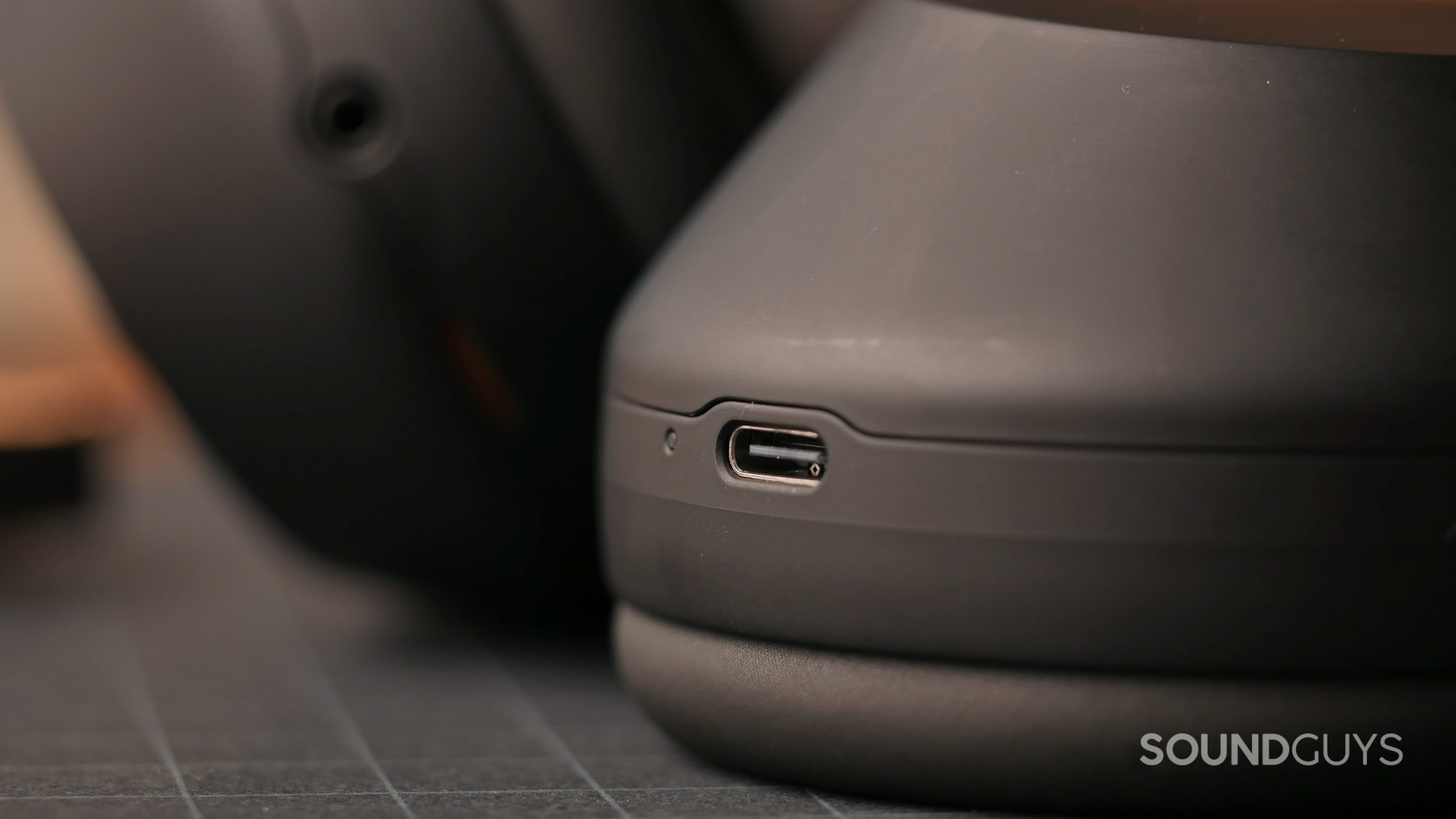
Our standard battery test yielded a result of 31 hours, 53 minutes with ANC on, slightly better than Sony’s advertised battery life of 30 hours for the WH-1000XM5. Interestingly, disabling ANC and re-running the test improved the result significantly (by more than 20 hours!), yielding a total battery life of 53 hours and 6 minutes under the same test conditions.
In either case, this is well beyond a normal week’s worth of commuting, or a long-haul flight. If you’re in a bind, just three minutes of charging will supply 180 minutes of playback. Of course, if you find yourself without a USB-C cable, you can always use the handy 3.5mm cable for direct analog playback.
How well does the Sony WH-1000XM5 cancel noise?
The Sony WH-1000XM5 represent a pretty big improvement in overall noise attenuation, and not just in ANC performance. It’s much better at isolating your ears from noise than previous iterations, meaning the offending blasts of incidental sound are physically blocked from reaching your ears. ANC can only do so much, so it’s almost always preferable to block out sound than cancel it.
Loading chart ...
Of course, the ANC itself is also very good. In our tests, it offered a tangible benefit compared to previous iterations of the WH-1000X line, as well as notably better performance in the low end when compared to headphones like the Bose QuietComfort 45, Bose Noise Canceling Headphones 700, and Sony WH-1000XM4. Canceling sounds in the range where most music is found by around 30dB, the headphones make engines, trains, and street noise drop off to about one-eighth their original perceived loudness. Basically, the WH-1000XM5 are the headphones to get if you absolutely need to stop buying cans for different purposes in your life.
Sometimes there’s a little discrepancy between what users actually experience and what gets measured on a test fixture, mainly caused by how the headphones fit. A helpful user on Reddit explored this further and identified fit is indeed the culprit for many experiencing underwhelming results.
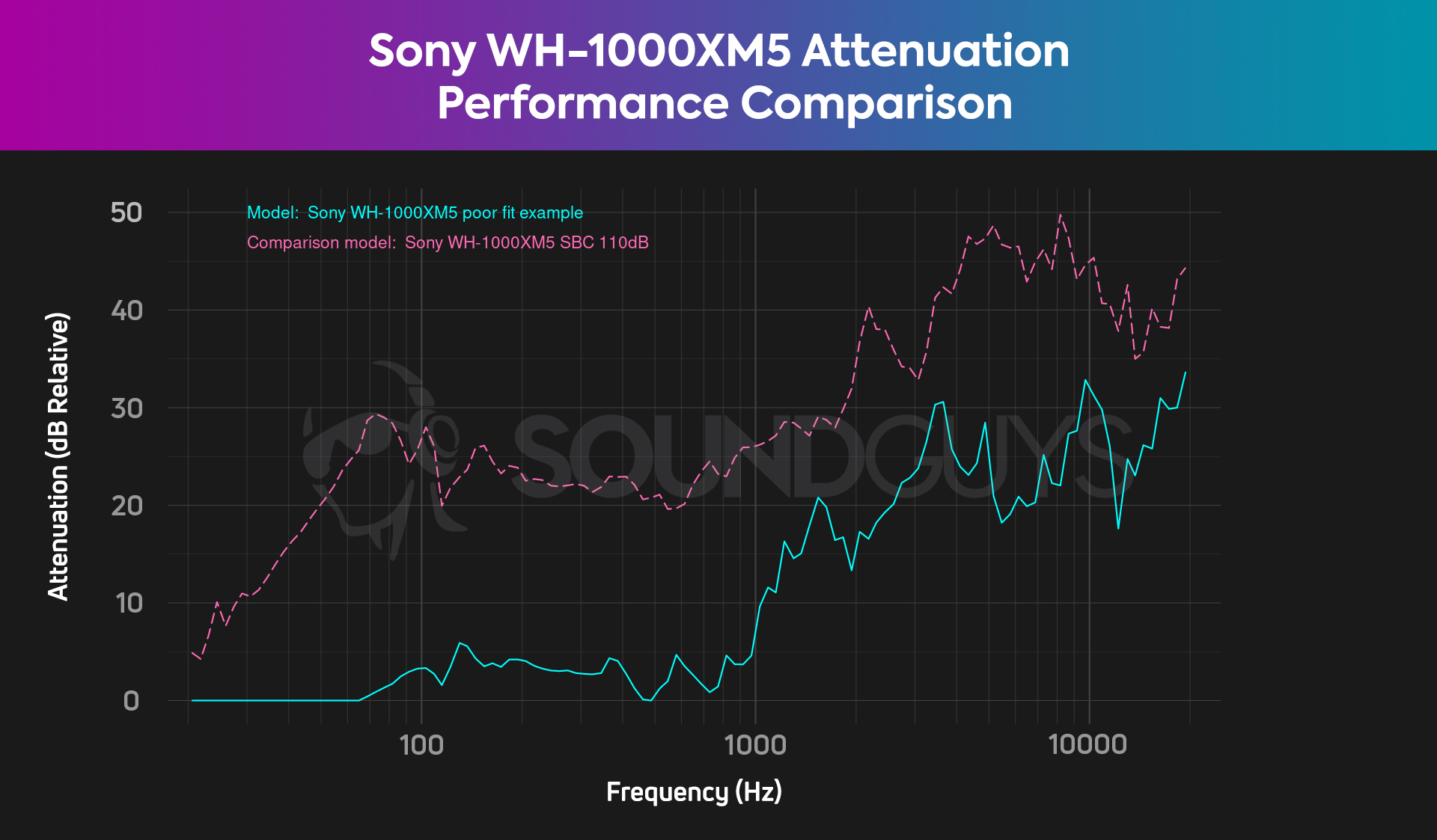
If you wear glasses, the arms of your specs can sometimes create a gap between the ear pad and your head, also making the ANC suffer. This is typical of any headphones, but something to be aware of.
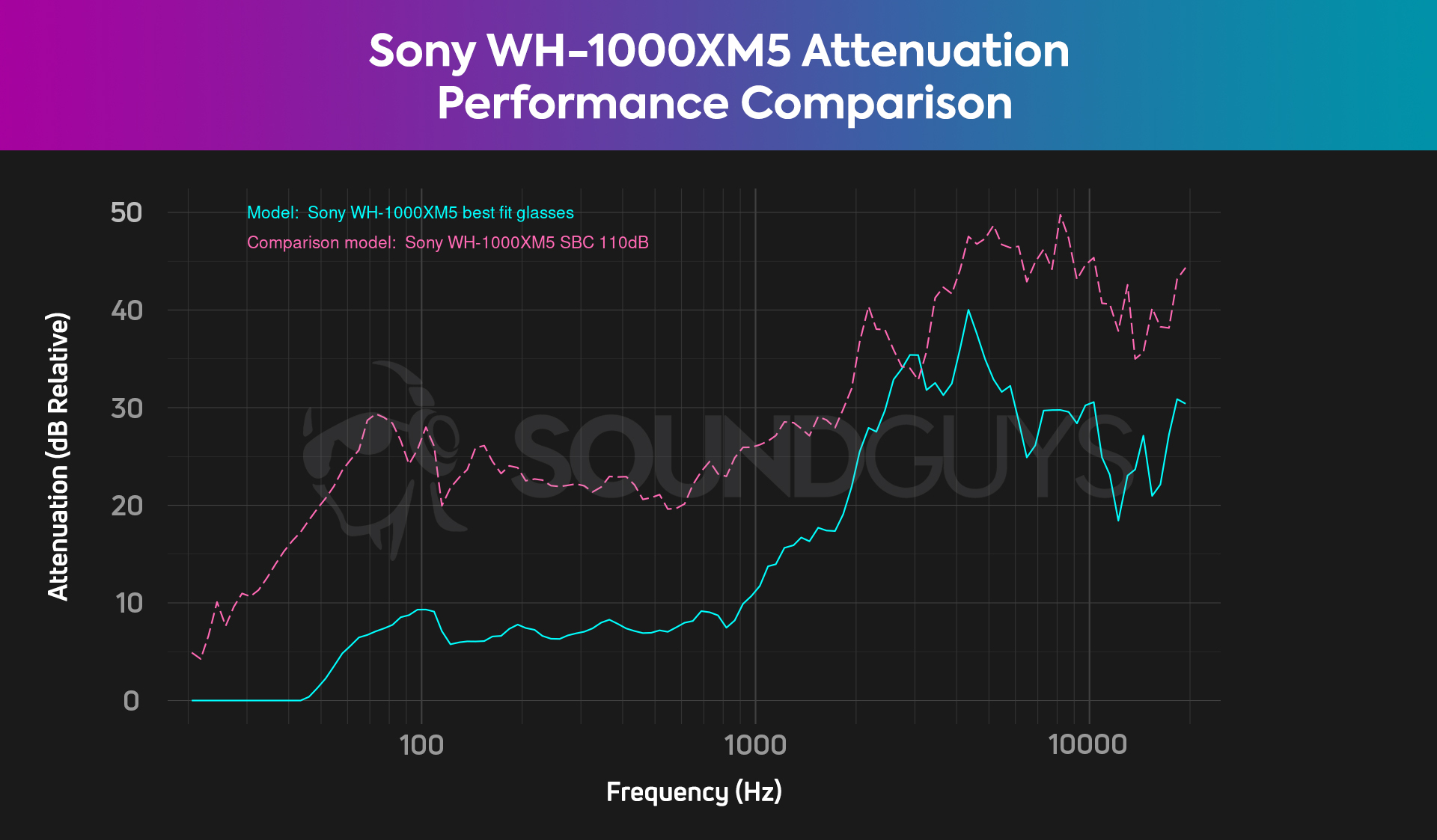
If you find that your Sony WH-1000XM5 isn’t doing so hot where noise cancellation is concerned, it is almost assured that you have a bad fit. Before returning them, try moving the ear cups forward a little bit while you wear them, or try to get them to fit as well as you can with the band straight up and down on your head.
How does the Sony WH-1000XM5 sound?
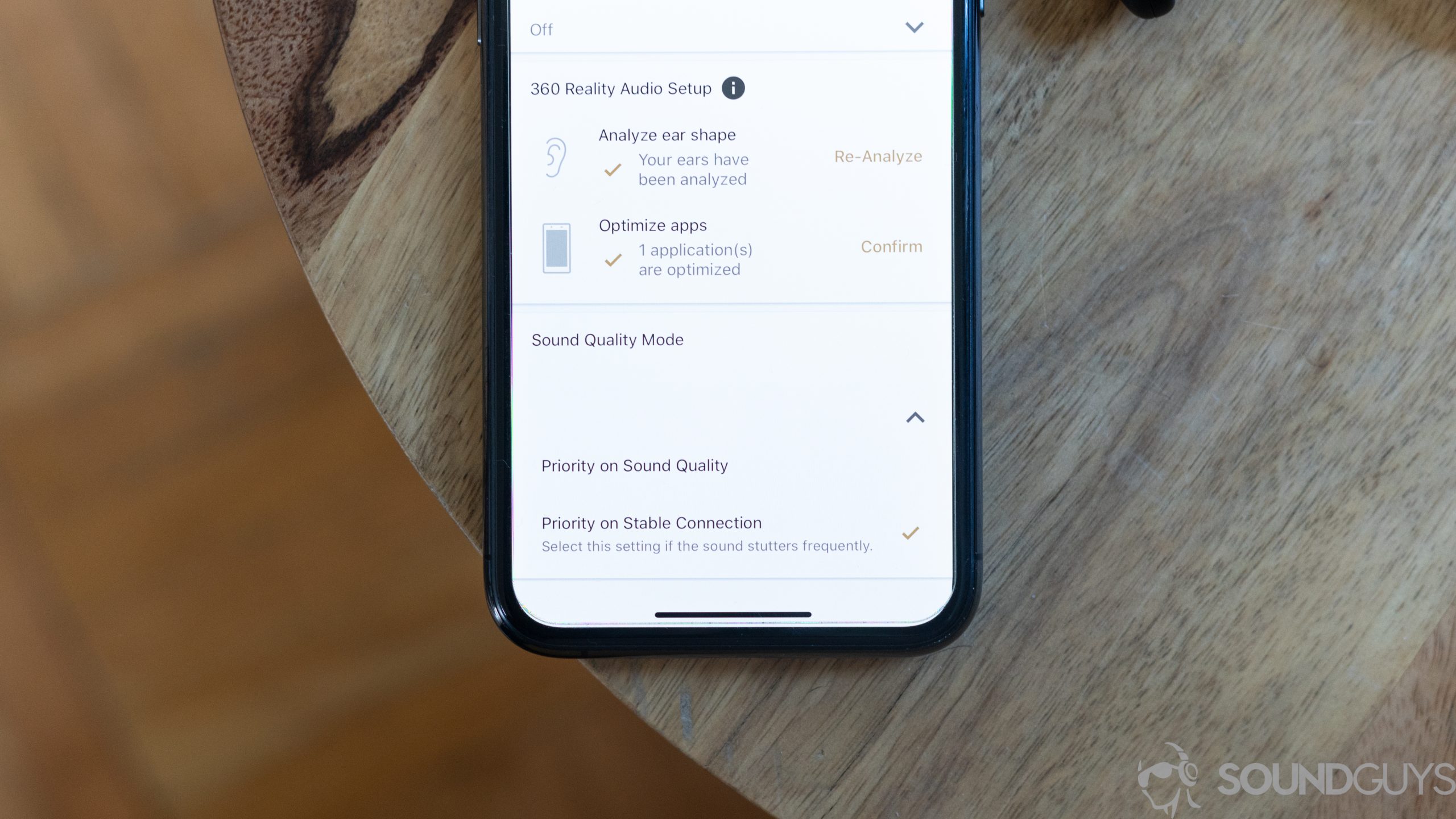
Multi-Dimensional Audio Quality Scores (MDAQS)
The chart below shows how the sound of the Sony WH-1000XM5 was assessed by the Multi-Dimensional Audio Quality Score (MDAQS) algorithm from HEAD acoustics.
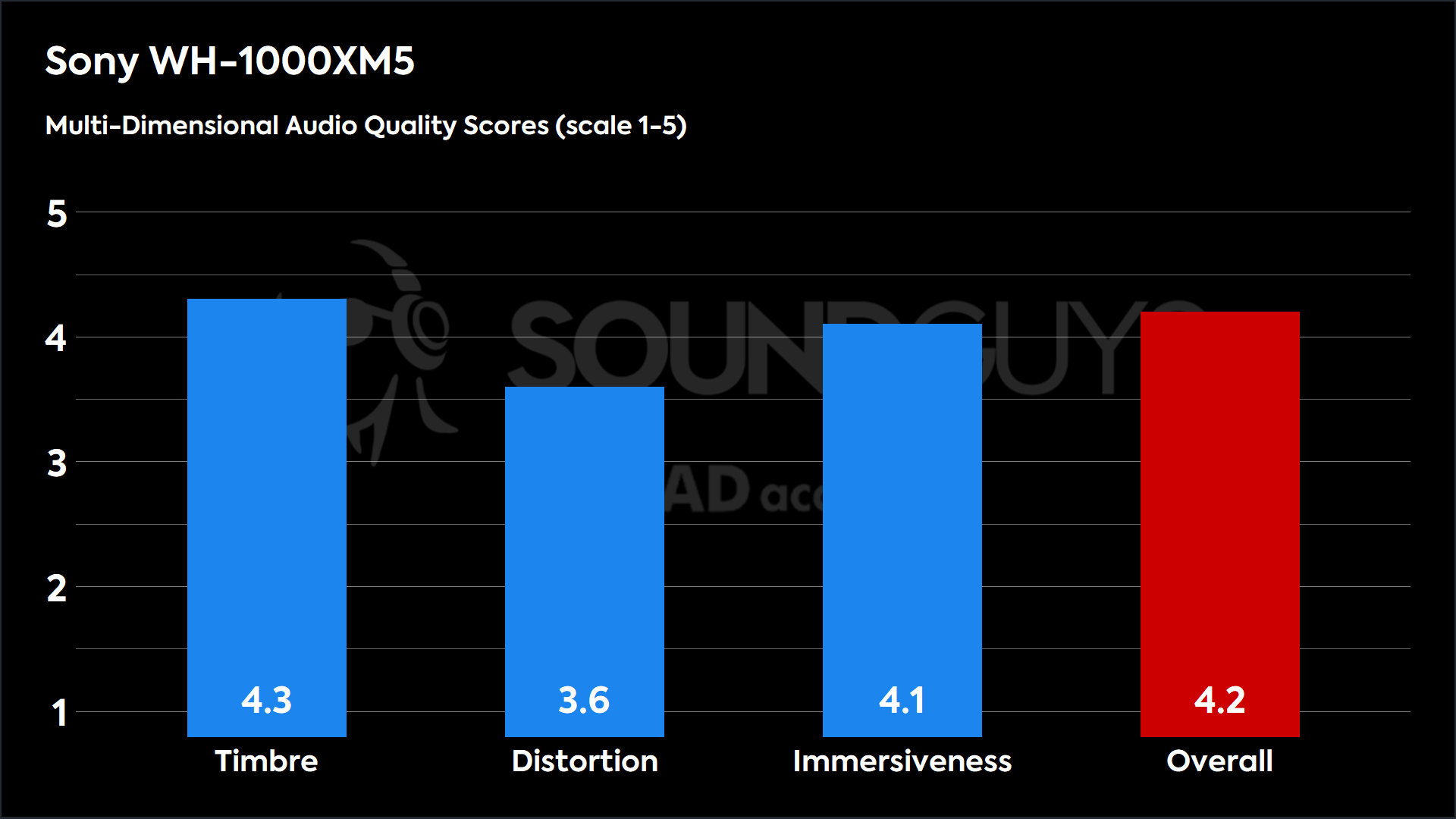
When it comes to perceptual assessment, the Sony WH-1000XM5 fare decently well. Tuning and immersiveness are strong points of the headphones, though they’re not quite as consumer-friendly as other competing options on the market. If MDAQS are to be believed, most people would rate the sound of the Sony WH-1000XM5 as pretty decent, even if it’s not technically the best. The headphones do a decent job of presenting the illusion of space with the stereo image.
You may notice some distortion to your music, but on the whole the default tuning will be fine. Keep in mind you can still tinker with the EQ if the sound isn’t to your liking, but it’s unclear how much that could move the needle in either direction as far as these scores go.
Timbre (MOS-T) represents how faithfully the earbuds reproduce the frequency spectrum and temporal resolution (timing information).
Distortion (MOS-D) represents non-linearities and added noise: higher scores mean cleaner reproduction.
Immersiveness (MOS-I) represents perceived source width and positioning: how well virtual sound sources are defined in three-dimensional space.
See here for an explanation of MDAQS, how it works, and how it was developed.
Objective measurements
Like most consumer ANC headphones, the Sony WH-1000XM5 boosts bass probably a little too much, and definitely to the detriment of the midrange. We’re used to seeing this by now, but compared to more “high-end” headphones, you’ll notice the very strong bass emphasis right away. The comparatively subdued midrange (from 300Hz to around 1050Hz) might sound a bit off as it gets drowned out by the much louder highs and lows. Without any equalization, you may find that stringed instruments, horns, woodwinds, and even higher vocals can get dulled in your favorite tunes.
Loading chart ...
Over time your ear will attune itself to the bass emphasis, and switching to a saner, more subdued equalization will sound off at first. We encourage you to play around with the options in the Headphones Connect app if you can, because there’s a fair bit of adjustment that can be done in that regard. I highly suggest nudging the “clear bass” setting down two notches at least.
On the other end of the frequency range is the highs — and those too are a little over-emphasized compared to our target curve. While it doesn’t look so bad on the chart, the under-emphasis in the mids means the swing in volume will make things like cymbal shimmer, hi-hats, and the attack on snares stand out in a mix. One area where there is a pronounced difference from its immediate predecessor is the steep rolloff after 10kHz, though. This will be most pronounced on tracks that rely heavily on uncrowded mixes, and lots of instrumentation like in “An Evening with Silk Sonic,” by Anderson .Paak and Bruno Mars.
Without any equalization, you may find that stringed instruments, horns, woodwinds, and even higher vocals get dulled in your favorite tunes.
The Sony WH-1000XM5 supports the company’s proprietary high-bitrate codec called LDAC, which boasts very good sound quality with few tradeoffs. However, you will need to dive into your developer options on Android if you want to make the most of the codec. By default, the headphones will connect using the “Best effort” mode which almost always defaults to lower bitrates. We suggest going with 660kbps if you’re adventurous enough to do the deep settings dive. That option seems to provide the best mix of sound quality and signal stability across the entire range of WH-1000X devices, with the WH-1000XM5 being no exception. The high-quality 909kbps option seems to work fine in regards to skipping, but you may notice a few jumps in audio playback if you leave your phone in your pocket with this setting.
Loading chart ...
Wired, the Sony WH-1000XM5 sounds near identical to its performance in wireless mode, but only when the headset is active (powered on). If you choose passive listening, the performance is less than stellar. It works fine, it just doesn’t sound like a $400 headphone in that state. To be completely fair, this is very common and expected with headphones that have both active and passive wired connection options.
While the boost to the bass and low mids are what some may deem a little extreme, equalizing it out will be a little bit of a pain. Not to worry though, we can offer some suggested settings for you to try out with either the Sony Headphones Connect App or a third-party option like Wavelet (if you like how this works, please consider buying the pro version of the app).
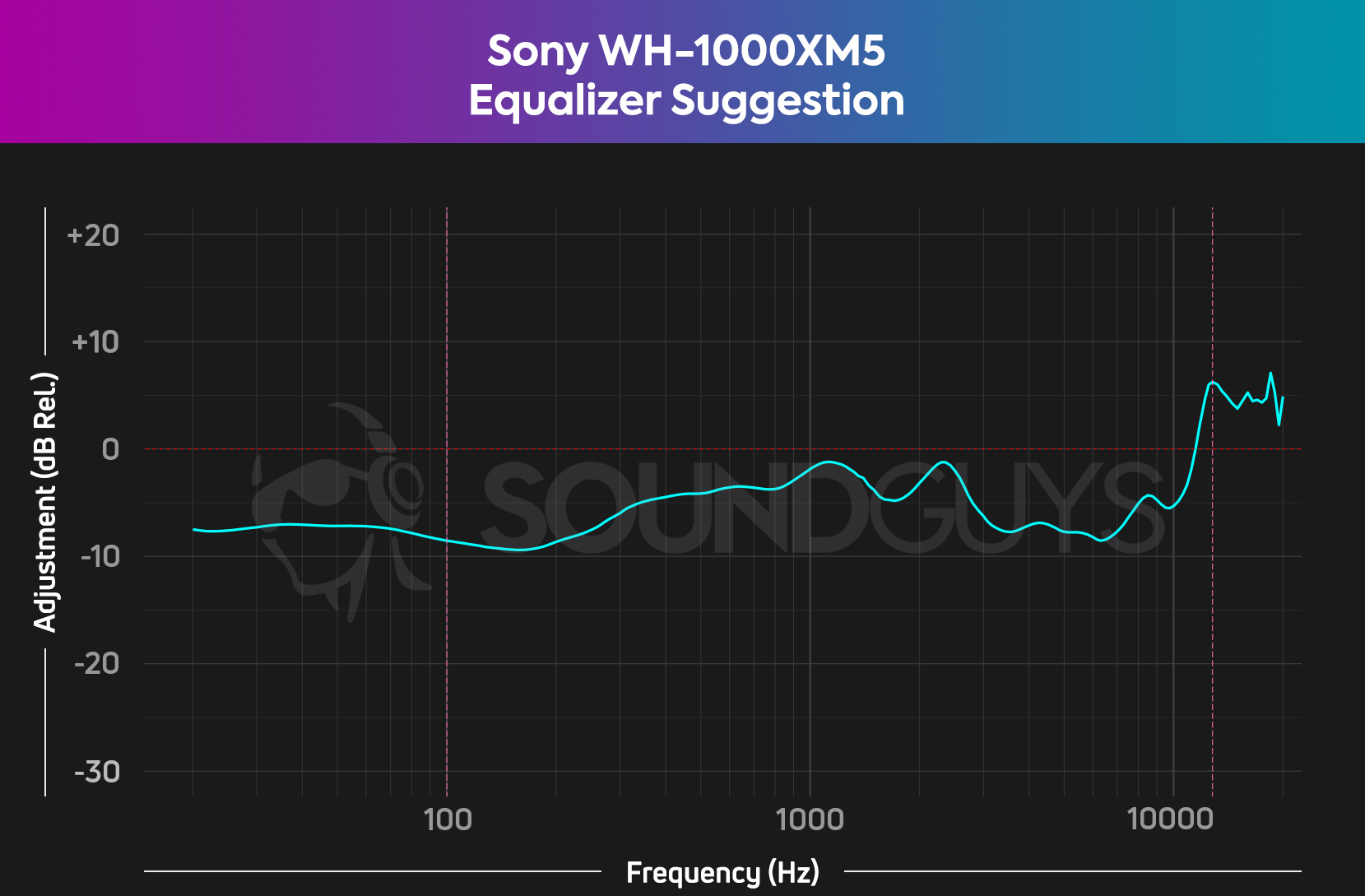
In the Sony Headphones Connect app, dropping the “Clear Bass” setting two notches will go a long way to improving your music, but you can also attempt to mirror this curve with the frequency sliders. Don’t go more than 6dB in any direction, though, as you could potentially add clipping or artifacts from the app attempting to alter the signal too aggressively.
Alternatively, you could use the Android app Wavelet to see how you like the sound. Pay attention to the chart (or screen-shot it) so you know roughly how to adjust the sliders in the Sony app, if you decide that we’ve missed the mark for you personally. Once you’ve done this, you can experiment on your own using our target as a starting point!
How does the Sony WH-1000XM5’s microphone sound?
Loading chart ...
Sporting an eight microphones array and an AI (I can only assume it’s actually “machine learning”) noise rejection algorithm, the call quality of the Sony WH-1000XM5 is quite good. While it’s not going to stand in for a dedicated condenser mic or anything, this is going to knock the socks off any Zoom call or phone meeting.
The microphone array particularly excels at rejecting outside noise, which you can hear in our samples below. If you think we’ve mislabeled any of these, I assure you we didn’t: the test is automated, and each file is named properly.
Sony WH-1000XM5 mic demo (Ideal conditions):
Sony WH-1000XM5 mic demo (Office conditions):
Sony WH-1000XM5 mic demo (Street conditions):
Sony WH-1000XM5 mic demo (Windy conditions):
If you want to see what other people are saying about these headphones, by all means vote in the poll below. After you vote, the results will display, and we can update our score after a certain number of votes are accumulated.
How does the microphone sound to you?
The Sony WH-1000XM4 microphone is very good but it can’t compare to that of the WH-1000XM5. Listen below.
Sony WH-1000XM4 mic demo (Ideal):
Sony WH-1000XM4 mic demo (Office):
Sony WH-1000XM4 mic demo (Street):
Sony WH-1000XM4 mic demo (Wind):
Should you get the Sony WH-1000XM5?
If you’re looking for headphones that can go with you to the office, on your next trip, or handle working from home: the Sony WH-1000XM5 is an excellent buy. Of course, your needs will dictate what’s worth the money to you, but $400 USD is a lot of money to gamble on — this is as close to a sure thing as you can get in the headphone world.
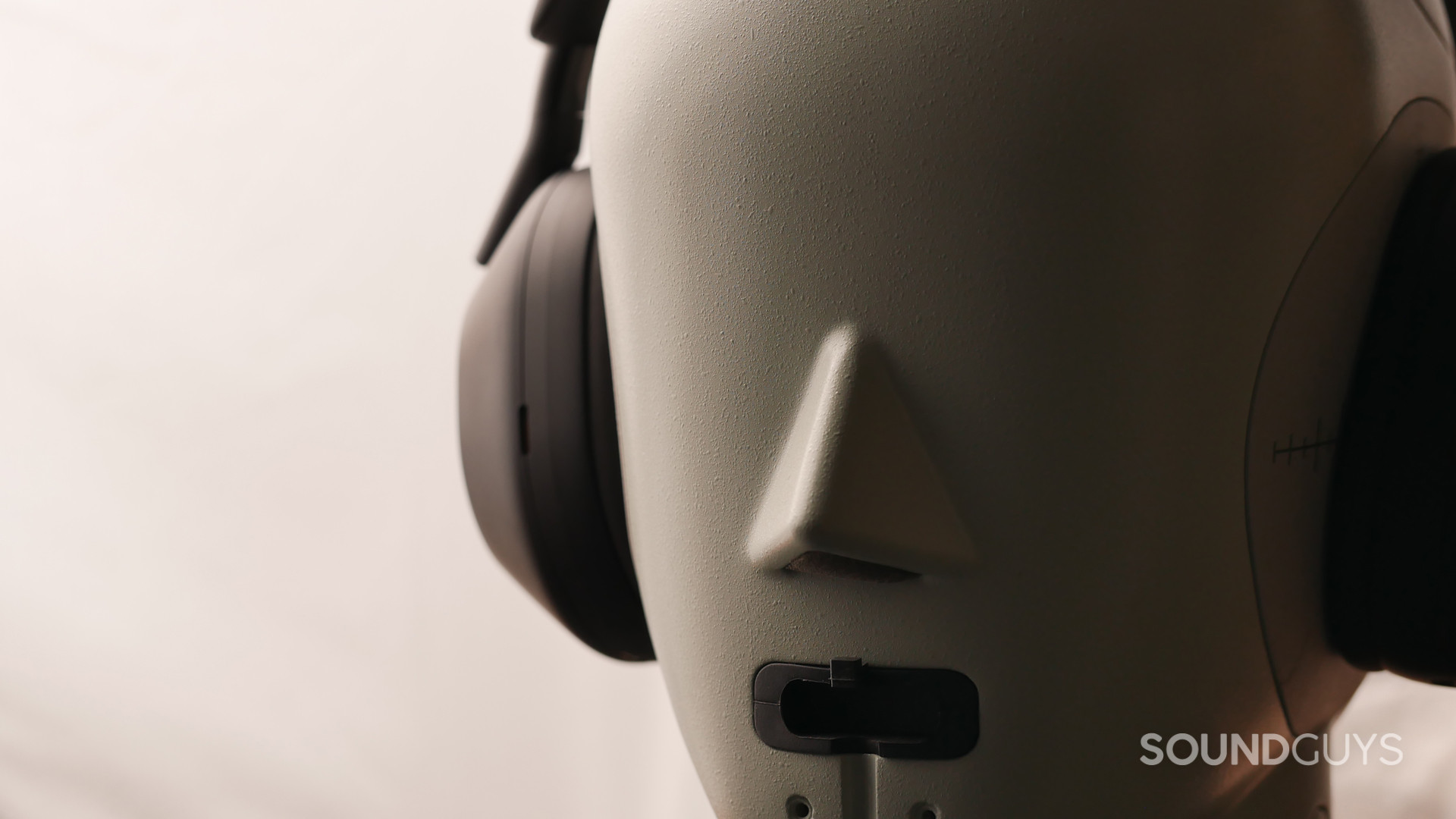
Excellent ANC performance, decent sound quality, and a host of modern features like Find My Device support in Android make for a very capable set of cans. While it’s disappointing that NFC and an IP rating aren’t present on the Sony WH-1000XM5 spec sheet, it’s a tradeoff I think most will be perfectly fine with making. The positives clearly outweigh the negatives in the lab and in real life.

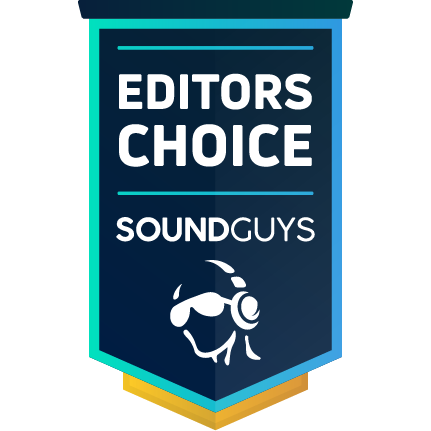
How does the Sony WH-1000XM5 compare to the Sony WH-1000XM4?
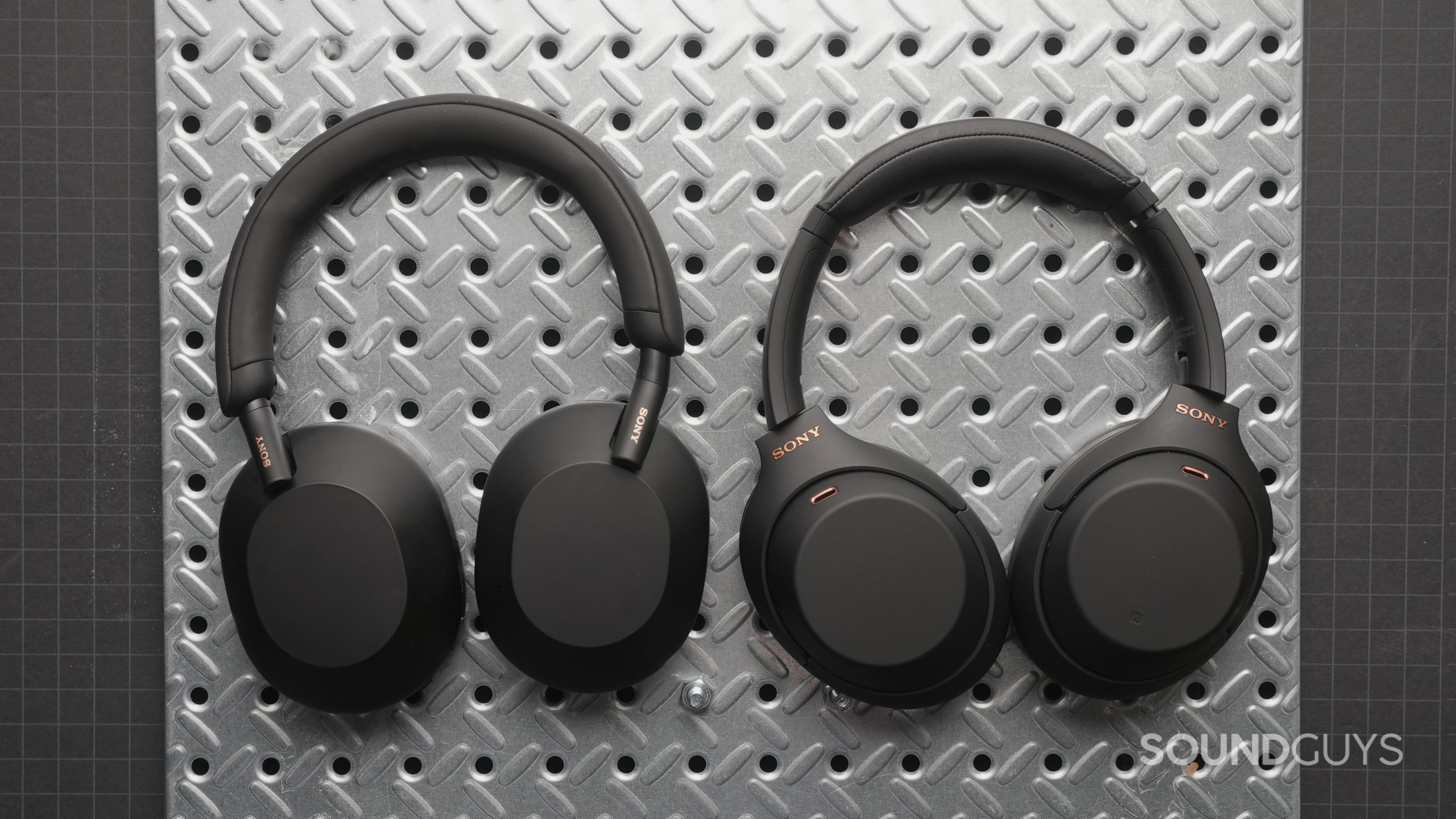
While the Sony WH-1000XM4 will remain on the market for a while, there’s little reason to get this over the newer WH-1000XM5 unless you can get it on a steep discount. The sound quality is slightly worse, it’s a little lighter on features, and some of the controls don’t quite work as well as they do on the WH-1000XM5. However, if you were to find the WH-1000XM4 at $280 to $320 USD, it wouldn’t be a bad idea to grab it off the shelf at that price. You won’t get exact feature parity, but you’ll be able to enjoy most of the things we like about the WH-1000XM5 like the 360 Reality Audio, ear detection, multipoint, and app features.
Our main concern with the Sony WH-1000XM4 is the fact that it’s a lot harder to EQ well, even though its sound quality is similar in many ways to that of the WH-1000XM5. That high-end over-emphasis is really easy to hear in your music, and can be a bit grating if you don’t tone it down with a preset or adjustment.
Read our full Sony WH-1000XM5 vs WH-1000XM4 article to learn more, and click the charts above to expand.


How do the Bose QuietComfort Headphones compare to the Sony WH-1000XM5?
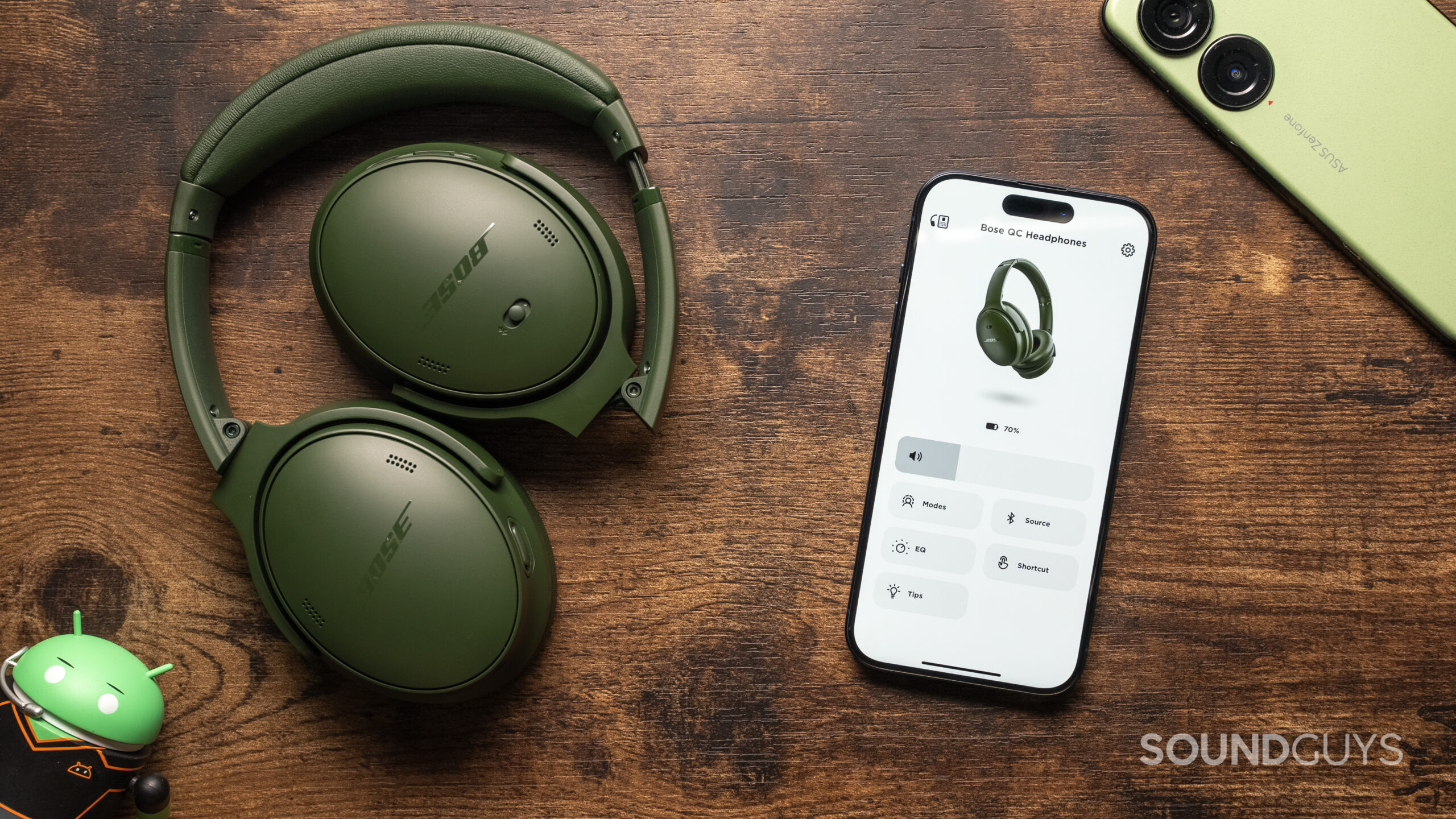
This one’s no contest, the Sony WH-1000XM5 drubs the Bose QuietComfort Headphones both in overall noise attenuation and wireless audio performance. Sure, the frequency response of the Bose doesn’t have the same bass shelf nor wide boost in the highs, but Sony’s app at least lets you EQ a bit more than Bose’s does. The Sony on the other hand is bassy, but a bit more consumer-friendly — all while offering a much higher bitrate for better-quality listening.
Loading chart ...
Of course, firmware updates could improve either set of headphones, so this one’s a little less cut and dry. However, dollar for dollar the Sony WH-1000XM5 is a clear winner at the time of publication.
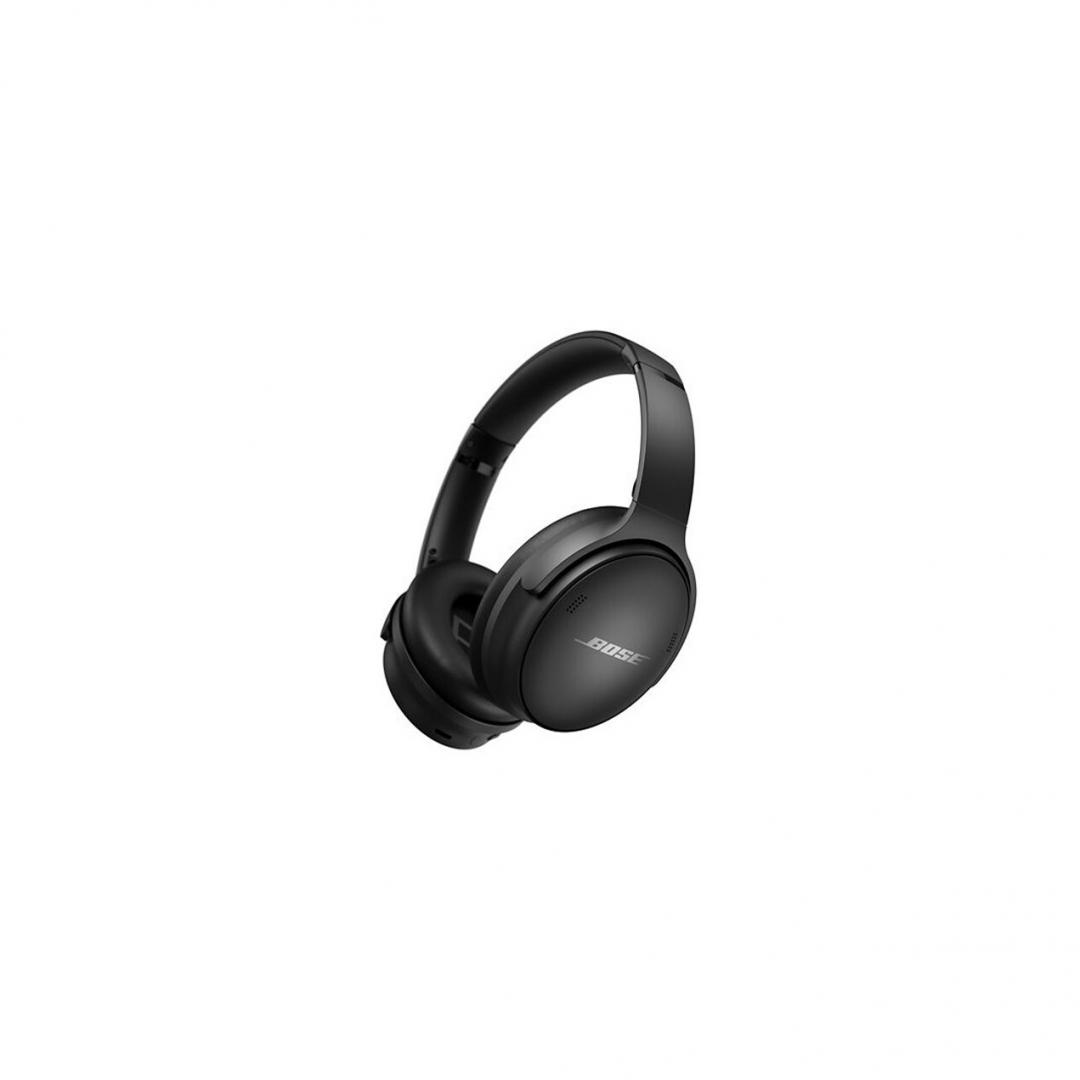

How does the Bose Noise Canceling Headphones 700 compare to the Sony WH-1000XM5?
When comparing the Bose Noise Canceling Headphones 700 to the Sony WH-1000XM5, it’s clear that both headsets are at the top of their games but Sony’s noise canceling and passive isolation overtakes Bose’s here too. The ANC chart below shows that Bose still does a good job attenuating frequencies below 1kHz but the XM5 headphones are ultimately the better buy.
As far as sound quality is concerned, the Bose NCH 700 sounds better directly out of the box because the WH-1000XM5 boosts bass and treble quite a bit more than our house curve recommends. This means that you may have a hard time hearing vocal detail from Sony’s headphones while simultaneously feeling like the treble is too “piercing.” You can equalize the sound with either headset and, to Sony’s credit, the Headphone Connect app EQ is more advanced than the Bose Music app EQ.


What should you get instead of the Sony WH-1000XM5
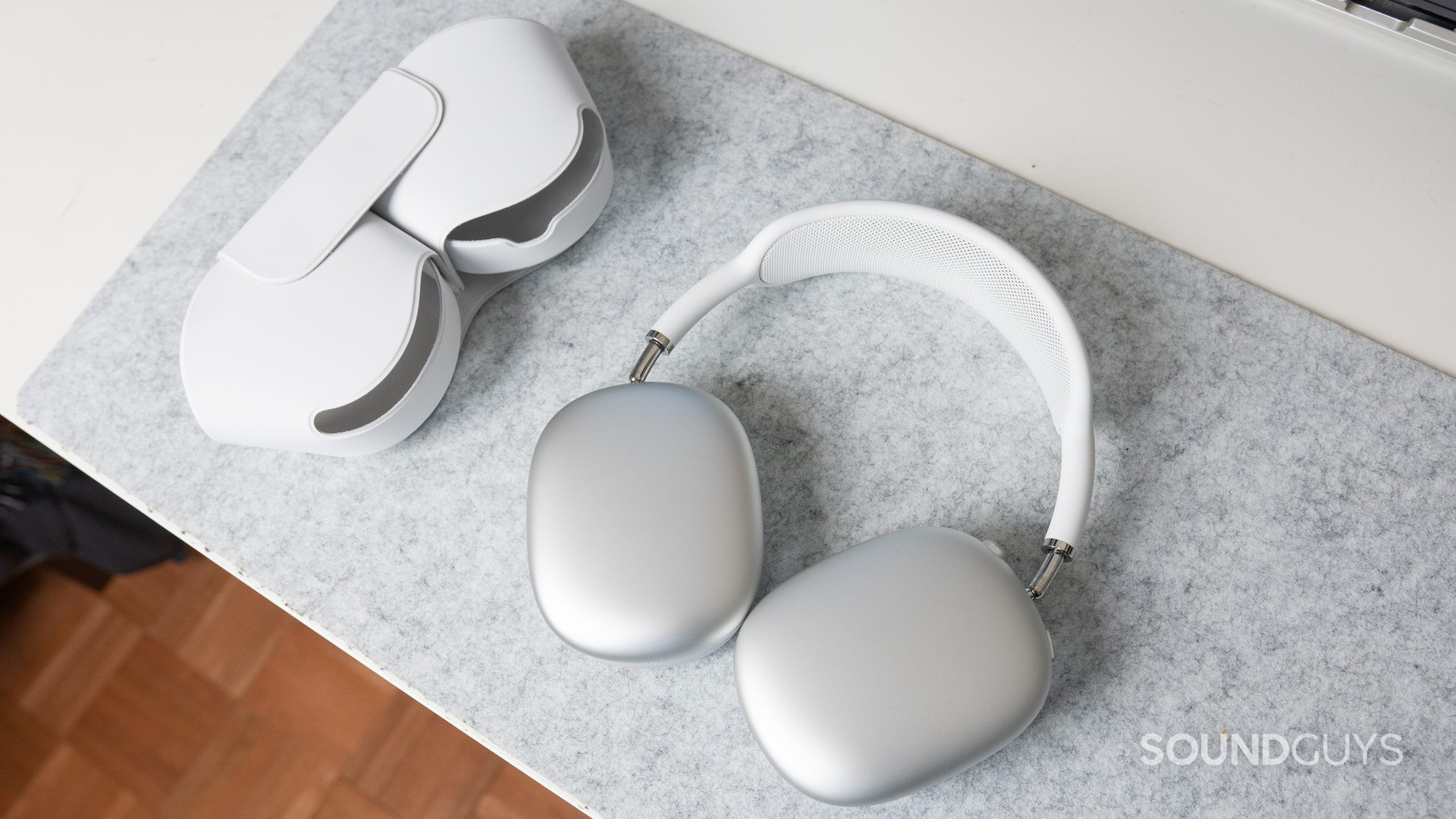
The Sony WH-1000XM5 has many competitors, and the Apple AirPods Max is the default over-ear choice for iPhone owners. Choosing between the AirPods Max and Sony WH-1000XM5 really boils down to your budget and your smartphone.
The AirPods Max technically has better ANC than the WH-1000XM5. When you click either chart to expand it, you can see how much more sub-bass the AirPods Max attenuates compared to the XM5 headphones.
Sound quality is also better with the AirPods Max out of the box, and you get Adaptive EQ no matter which device you use it with. That said, other things like automatic ear detection and Apple Spatial Audio only work with Apple devices, whereas you get equivalent features with Sony’s headphones on any device. Ultimately, the WH-1000XM5 is more suited for those who use both Apple and non-Apple devices, whereas the AirPods is really only out to serve one consumer: Apple’s.
The Sennheiser MOMENTUM 4 Wireless is another great option over the WH-1000XM5. Sound quality is better with the MOMENTUM 4 Wireless right out of the box, but you can EQ the sound of either headset through its respective app. When it comes to ANC, Sony is the clear winner but Sennheiser still performs very well.
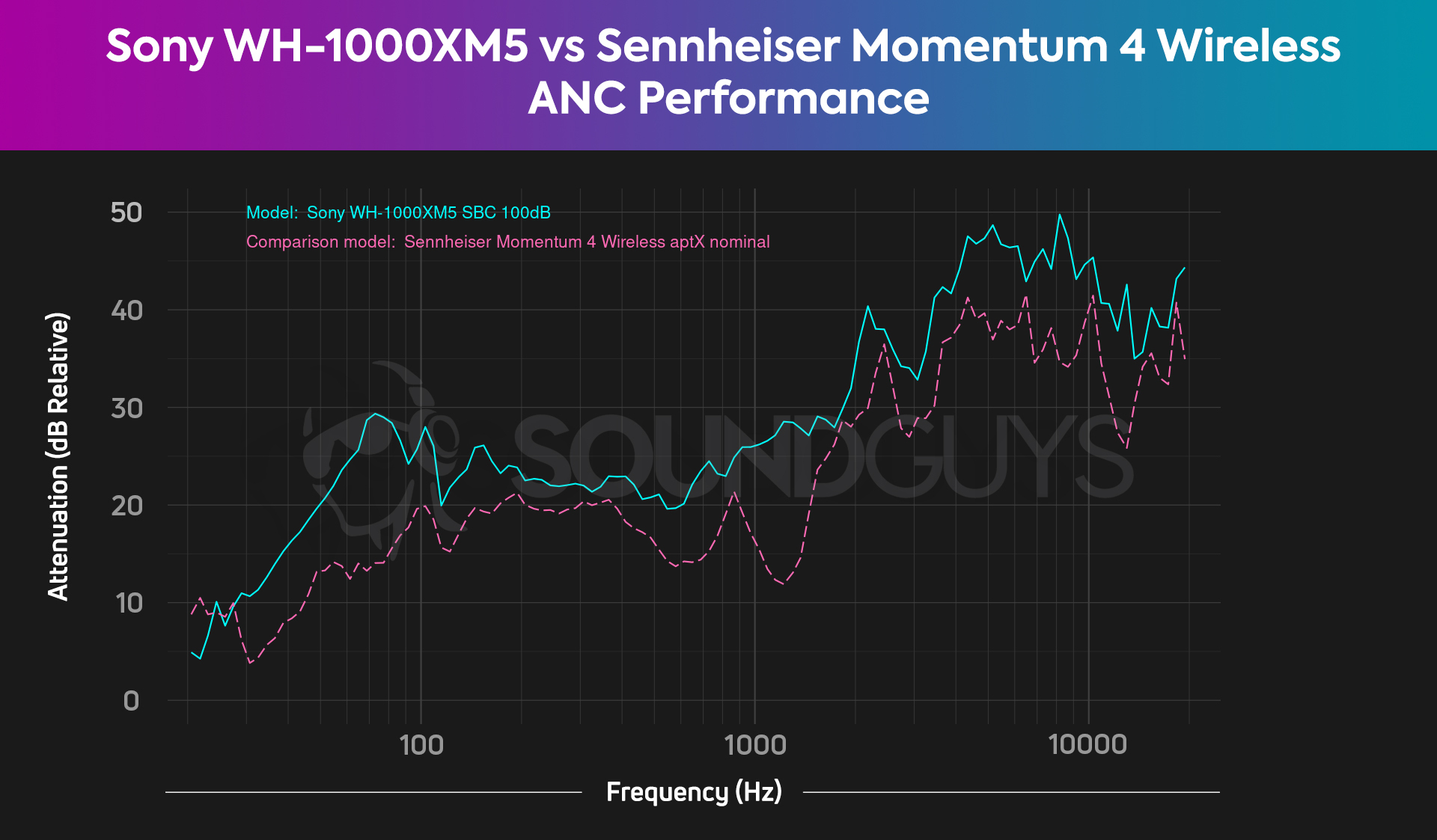
Not everyone values ANC alone, though, and the MOMENTUM 4 Wireless still has a lot going for it like battery life. Sennheiser’s headphones last 56 hours, 21 minutes compared to Sony’s XM5 headphones which last 31 hours, 53 minutes. You can’t go wrong with either headset, but we implore you to read our full MOMENTUM 4 Wireless vs WH-1000XM5 article to learn even more.
Wireless earbuds to get instead of the Sony WH-1000XM5
Let’s say you want something pocketable instead of Sony’s flagship over-ear headphones. With so many wireless earbuds to choose from, we’ll highlight just a few, most obviously, the Sony WF-1000XM4. This is Sony’s highly portable ANC solution that fits comfortably and blocks out a ton of noise. With an IPX4 rating, you can rest assured that the WF-1000XM4 will handle all of your sweat.
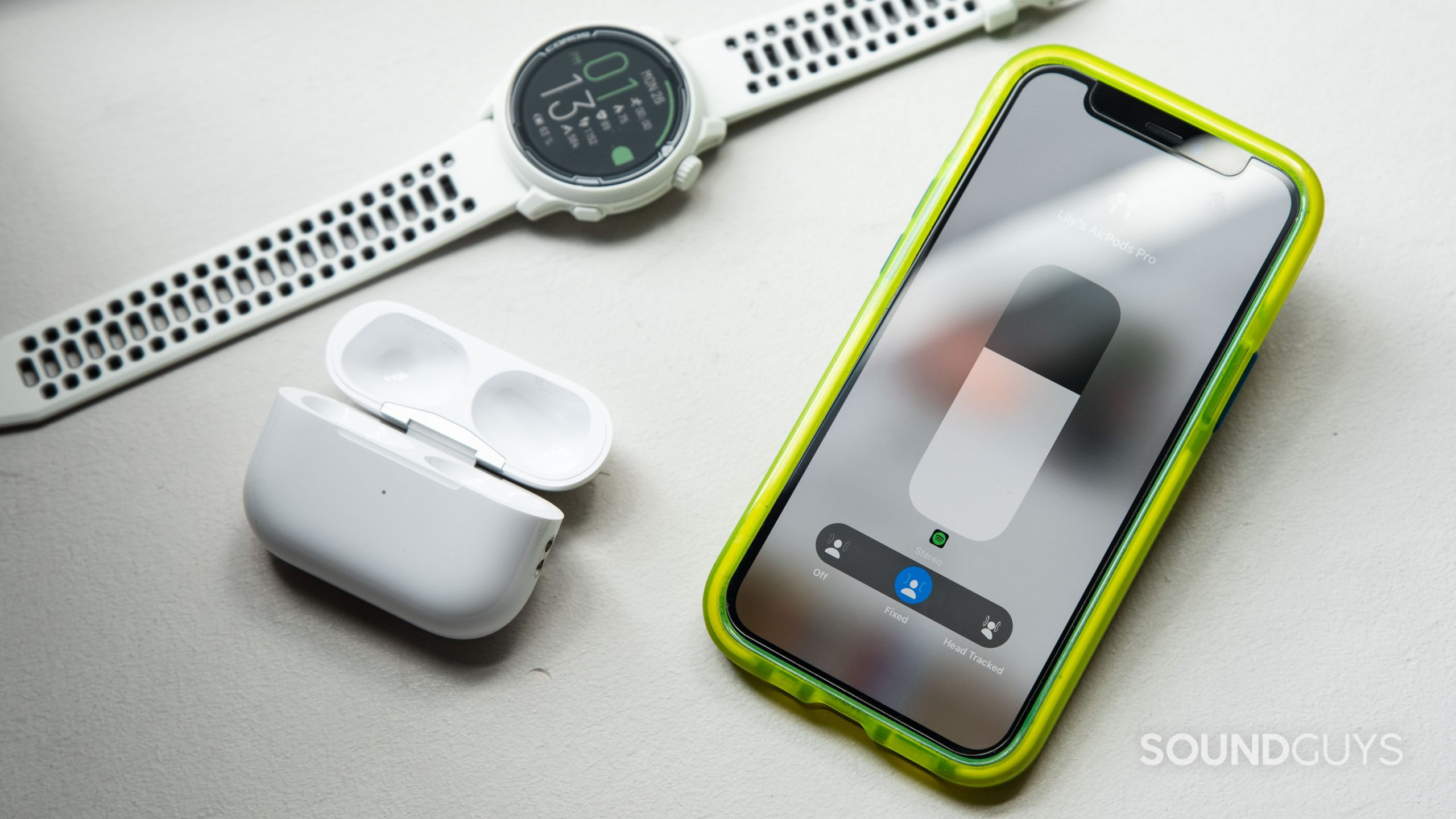
The Apple AirPods Pro (2nd generation) is another obvious pair of wireless noise canceling earbuds to pick up, especially if you use an iPhone. These wireless earbuds share the same IPX4 rating as Sony’s buds. We like the new AirPods Pro for its sound quality and noise canceling capabilities. Just bear in mind: you can only take advantage of most software features when paired to an Apple device.
Samsung phone owners, give the Samsung Galaxy Buds 2 Pro a go. These playful buds sound great and have some of the best low-frequency attenuations we’ve tested, beating out the Sony earbuds mentioned above. Battery life is average and shorter than Sony’s, though.
Frequently asked questions about the Sony WH-1000XM5
Noise canceling headphones can quiet your commute and make it easier to concentrate once you arrive at the office. We like ANC tech because it can also reduce your risk of noise-induced hearing loss. The best ANC headphones attenuate frequencies across the spectrum and with the isolation and ANC offered by a headset like the WH-1000XM5, you’re unlikely to increase the volume to dangerous levels in order to combat external sounds that make it hard to hear your music.
Yes, if you turn on the headphones. If you don’t turn them on, they’ll still work just like normal — non-ANC — headphones.
I wouldn’t recommend it.
Seems totally fine!
Not that we found — but Vancouver, Canada isn’t known for cold winters.
Luxury audio company Focal released the Bathys ANC headphones in 2023, hoping to take aim at the top end of the market. For $699, the Bathys does offer some substantial features over the Sony WH-1000XM5 like improved sound quality and connectivity options. However, that price tag coupled with poorer ANC (fit depending) may give you pause if you’re primarily looking for a set of commuter headphones. If you need the best sound quality, though, the Bathys is a no-brainer.